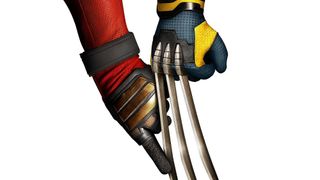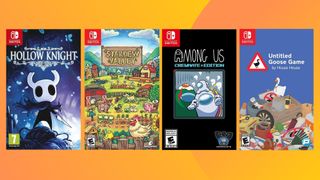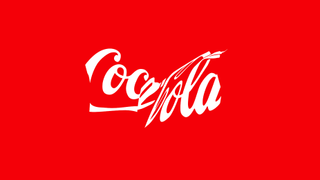Towards the end of the 1800s, a dramatic shift occurred in the art world. At the cutting edge, slavishly copying subject matter was replaced by increasing abstraction, which during the 1900s led to movements of purely abstract work, entirely free from recognisable elements. The bug of abstraction has now taken hold in the world of illustration, often as self-initiated fine art-oriented projects, but increasingly as paid commissions. Technology has its part to play, with the tools required for truly generative, organic art now in the hands of the typical designer. However, people - both creators and audiences - are the driving force.
Despite a certain amount of technology aiding the bulk of abstract work (such as Illustrator, Photoshop and programming environments for creating truly generative illustrations), and the decorative and mostly subject-free nature of the end result, abstract art has the potential to release creators from the burden of narrative, enabling them to concentrate on engaging the viewer on a purely emotional level.
For the viewer, the relationship with such artwork is very different from traditional illustration. Abstracts force you to use your mind and imagination, provoking an emotional response, as opposed to representing a familiar image that's mere commentary, supporting nearby text. Reactions to abstract pieces are 'This reminds me of...' and 'This feels like...', not 'This is...'. A viewer may be further engaged as work is deciphered through their own experiences, creating a unique interactive insight. And the more that's hidden from someone, the more likely they are to scrutinise the work and engage with it.
For the illustrator, abstracts offer something rare in traditional illustration, and often missing altogether. There's scope for much more experimentation, a freedom to explore a spectrum of shapes, sizes and colours of the type rarely considered when working on the usual fare. In abstract illustration, there's the possibility of genuinely not knowing where you'll end up.
Generative work - the kind created by algorithms - takes this further, adding a level of randomness that simply doesn't exist in any other area of digital illustration. It's not possible to control every little detail from start to finish, which is an exciting prospect for illustrators sick of the overtly disciplined nature of working digitally. Often, by using the simplest of rules, elements will communicate and reinterpret an idea, leading to unexpected but exhilarating results. And although such artworks are apparently highly complex, many use rules found in nature, thereby drawing people in, relaxing them and offering a timeless quality free of outside influences.
The aims of many abstract illustrators tend towards those of fine artists, as does plenty of their output. Whether said output actually is art is another matter; it's open to interpretation and the intent behind each piece of work. Most of those working in the field of abstract illustration reckon it falls between traditional illustration and the fine arts, offering the best of both worlds.
Crossing the boundaries
On the one hand, it has a certain direct commercial appeal that a lot of fine art lacks, but it also offers an aesthetic that appeals to the art world, which leads to opportunities for exhibiting work in galleries and selling posters in art shops. "Maybe abstract illustration is more about the digital age washing away the borders between the fine arts and illustration," muses Copenhagen-based Nan Na Hvass, an illustrator and designer whose work regularly crosses such boundaries, and which is equally at home as part of a huge mural as in a magazine.
Get the Creative Bloq Newsletter
Daily design news, reviews, how-tos and more, as picked by the editors.
Although most abstract illustration has historically been self-initiated, created for pleasure and exploration, today it's usually commissioned. As with any relatively underused style, one argument for this increase in commercial viability is that abstracts are often visually striking and very different from traditional illustration. There's also a perception that they're more inspiring and enable clients to reach customers with something unexpected, increasing impact.
Perfect harmony
With the randomness and vibrancy apparent in most abstract works, not every publication or company will jump at the chance to engage with such creations, but anyone hankering for more expressive imagery is well catered for. One good example is Edvard Scott's work for the 2006 classical music season at the Southbank Centre, London. Commissioned by Steve Russell, design manager at charity the Wellcome Trust, on the strength of some earlier magazine work by Scott, the end result was wildly different from previous identities, which had centred on photographs and photo-collage.
"What intrigued me was the quality of visual poetry and painterly composition that Scott brought to his work, and the way many of his pieces brought instant but contrasting interpretations from different people," explains Russell, noting that music has a similar quality. With the core audience for classical music at the Southbank Centre being sophisticated and resistant to transparent marketing solutions, Scott's output was a good match. It worked in its own right, rather than being a shallow piece of marketing to explain an event. "Scott's genius is in transmuting found imagery into abstract composition while creating readable and subtle messages," argues Russell. "Too much current illustration is mere layering of found imagery, which is no more than the sum of its parts."
Get fresh
Most abstract artists avoid including recognisable elements, aiming to create something pure and true. Forms are vague, ensuring viewers don't become entangled in preconceived ideas regarding what an object 'is' or 'means'. For Hvass and her design collaborator Sofie Hannibal, this 'blank canvas' approach is particularly important. Hvass explains: "We never look at a picture or development and say, 'Let's make something like that.' This keeps the work intuitive and never calculative - we don't look at what's fashionable and then follow."
Again, this line of thinking brings to mind fine art more than illustration, although avoiding specific elements is a restriction too far for some. For example, Simone Magurno, based in Karlskrona, Sweden, is an illustrator who is keen to work as freely as possible. However, Magurno doesn't hesitate to add recognisable elements if he believes that a piece needs them, although they do tend to end up in the distinct minority compared with the abstract components.
When it comes to enabling technology, vector tools Illustrator and the defunct FreeHand are the typical weapons of choice for creating abstract work, thanks to the scalability vector art provides. Once the dimensions of a project are finalised, Photoshop is sometimes wheeled out for adding colour treatments and retouching rasterised images, and artists occasionally explore 3D techniques via the likes of Cinema 4D. Of course, this process applies just as well to some traditional illustration, but a number of abstract illustrators take a more radical approach.
Generative art is nothing new, even when considering purely algorithmic art - plotters were used to create computer-generated art in the 1960s, and two decades later truly digital algorithmic compositions emerged in fractal artwork, which eventually found its way into the mainstream in countless music videos and posters.
In recent years, generative work made a comeback via the likes of Josh Davis, Eric Natzke and Danny Franzreb, but instead of inordinately expensive, proprietary tools, these designers and illustrators use commonplace products in unique ways. Natzke favours a combination of Adobe software - Flash and Director for programming aspects - while Franzreb is keen on the open-source language and environment Processing, which he says enables him to create versatile interactive artwork that can be printed as high-resolution vector imagery, recorded as video, or used in 3D software.
Controlling the random
For creators of generative art, a strange combination of 'letting go' and the ability to reboot an idea holds the most appeal. It's almost controlling the uncontrollable - the collision of the random and the ability to manipulate variables, hoping that it will cause something new and exciting to happen. Natzke for instance describes his creative process as "a journey of discovering what can be done and how to persuade the technology to head in a direction that is visually and stylistically in tune with where I'd like to see things evolve".
The surprise of unexpected results is a huge allure, and despite his highly technical approach, this directly corresponds with the feelings of Jen Stark, an American fine artist whose sculptural work reflects generative art. In terms of process, her work couldn't be more different from Natzke's: everything is hand-made, sketched out on paper then fashioned layer by layer (without guides), her only tools being knives, a ruler and the occasional compass. However, her paper-based designs morph as they grow, and inconsistencies cause designs to change dramatically. In effect, her parameters are handmade, rather than digital - randomness coming from 'mistakes', which cause subsequent cuts to be different. The results are surprisingly similar to Natzke's.
While Stark's beautiful sculptures are suited to a fine-art world of one-time purchases for potentially high prices, the same wouldn't be true for commercial illustration, where deadlines are paramount and changes are regularly required.
With a code-based approach, however, there's the potential to make such amendments. "With generative art, if you don't like the results you're getting, you stop the process to manipulate the variables and formulas," explains Natzke. "Many things are left to chance as well, and so part of the design process is to incorporate handlers to the code. This could be a mouse control, sliders that control associated values to variables, or keyboard events that toggle the Boolean states of various components - all of which work together as the code-based equivalents to primitive tools like brushes and paint."
Abstract obstacles
With readily available technology enabling abstract artists to finally realise their vision - in generative art or otherwise - the time would appear to be perfect for the movement, but it's not all plain sailing. Although software feature-sets continue to grow, abstract art is a low priority at software firms, especially when it comes to programming environments. And while the usability of tools continues to improve, some (Natzke included) reckon there are still too many barriers between thought and creation, meaning too many steps.
But technology may not be the only factor in where things go next. Some consider a lack of narrative focus a terminus, the place where an artform ends up when it has nowhere else to go. Rothko and Pollock are sometimes claimed to be the dying breath of painting, leading the artform to its logical conclusion: an effective full stop for a medium with nothing left to say.
It's easy to apply this thinking to illustration, much of which has, because of ever-tightening budgets, become tired and free of innovation. However, their creators claim that abstract works of art merely expose another tool in the landscape of illustration. What we're seeing is evolution rather than death, giving illustrators the scope to be more expressive, freeing themselves from the regimented restrictions of a defined narrative brief, and offering challenging work that inspires and engages the imagination, rather than presenting 'answers'.
As long as this evolution continues, with technological advances enabling creatives to do more and more, and the artistic yearning to experiment and discover persists, abstract illustration has the potential to grow during the years ahead, at least until the point where 'anyone can do it'. If Adobe creates a generative art plug-in for Photoshop and Illustrator, it's time to move on.




